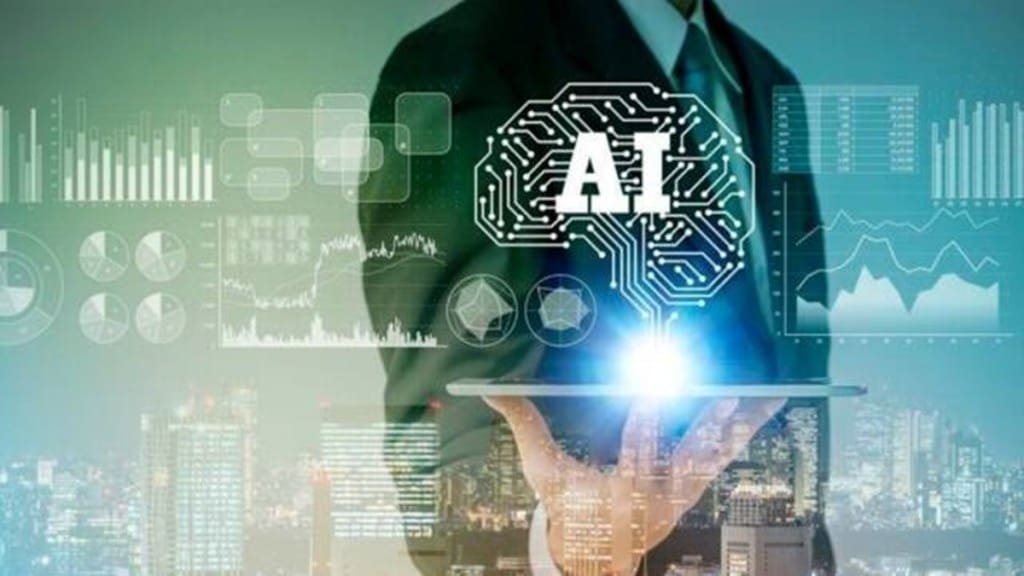By Atanu Biswas
Every day, AI shows off a new magic trick. As per recent news, Paul McCartney and the long-deceased John Lennon are reuniting at AI’s Hogwarts. An AI algorithm has been used to extract John Lennon’s voice from a demo track. However, some critics find bringing back the voices of deceased artists downright creepy. Among other negatives, they contend that AI will never be able to interpret vocal performances with the same emotional nuance that a human performer does. One can speculate, though, that this is simply the start of an avalanche.
Let us think about a different generative AI avatar. After admitting that AI was used to create the prize-winning photograph, which depicted two women from different generations in black and white, German artist Boris Eldagsen turned down the Sony World Photography award in April. Eldagsen stated that he was interested in finding out if competitions would be prepared for AI images to enter. They are not, as we can clearly see.
Today’s AI is capable of writing op-eds and producing fiction in the styles of long-dead authors. Thus, AI may be used to complete unfinished works by Charles Dickens and Ernest Hemingway. Fresh artwork in the vein of van Gogh or Picasso, or sculptures in the mold of Michelangelo or Rodin, could be produced soon. Some research articles have even included AI tools like ChatGPT as co-authors, prompting many publishing houses for scientific journals to put strict restrictions.
All of these are different manifestations of generative AI technology, which Noam Chomsky and his co-authors describe in an article for the New York Times as “a lumbering statistical engine for pattern matching, gorging on hundreds of terabytes of data and extrapolating the most likely conversational response or most probable answer to a scientific question.” In reality, AI is adept at predicting what should happen next; therefore, you should excel at deviating from the conventional. Differently, human intelligence “seeks not to infer brute correlations among data points but to create explanations.” Of course, human intelligence is not one-dimensional. Ignacio Matte Blanco, a 20th century psychiatrist and psychoanalyst from Chile, attempted to explain it using bi-logic, which uses logic to account for both how the unconscious functions and the non-logical components of experience.
However, the coexistence of AI and human intelligence has suffered a setback as a result of the recent breach of the barrier by AI tools like ChatGPT and Midjourney. The “existential threat” posed by AI was even raised by Geoffrey Hinton, who is regarded as the godfather of AI. However, per Yann LeCun, another godfather, “Making AI safe is going to happen as with every new technology… it’s going to be a process of iterative refinement.” According to LeCun, “getting that [AI] slightly wrong may hurt some people (as cars and airplanes have) but will not wipe out humanity.” Clearly, there is disagreement among godfathers on the future of AI-driven humanity. No wonder the average person is perplexed.
Let us compare Eldagsen’s experiment to an event described in David Brooks’ NYT essay, In the Age of A.I., Major in Being Human. Brooks described a piece of artwork generated with AI that took first prize at the Colorado State Fair last summer. It looked cool at first glance, but after a second, it felt kind of lifeless. “It’s missing a humanistic core. It’s missing an individual person’s passion, pain, longings and a life of deeply felt personal experiences. It does not spring from a person’s imagination, bursts of insight, anxiety and joy that underlie any profound work of human creativity,” wrote Brooks. Well, is this the fine line between human creativity and production by a machine?
The Moravec paradox, created in the 1980s by Hans Moravec and his colleagues, is significant: “It is comparatively easy to make computers exhibit adult level performance on intelligence tests or playing checkers, and difficult or impossible to give them the skills of a one-year-old when it comes to perception and mobility.”
Eldagsen, however, emphatically doesn’t see the process of building an AI image as dehumanising or as a threat to creativity, although he thinks that photography and generating images with AI are not the same. “One is writing with light, one is writing with prompts. They are connected, the visual language was learned from photography, but now AI has a life of its own,” Eldagsen said.
Brooks identified unique human skills that AI cannot replicate, such as a unique voice, presentation skills, a childlike creative talent (Moravec paradox?), unusual worldviews, and empathy. “AI will probably give us fantastic tools that will help us outsource a lot of our current mental work. At the same time, AI will force us humans to double down on those talents and skills that only humans possess. The most important thing about AI may be that it shows us what it can’t do, and so reveals who we are and what we have to offer,” per Brooks. Are the logics of Brooks and Eldagsen tied in a common thread?
Still, an inconclusive debate, eh? The discussion, due to the fact that AI now might have a life of its own, goes on.
The writer is professor of statistics, Indian Statistical Institute, Kolkata

